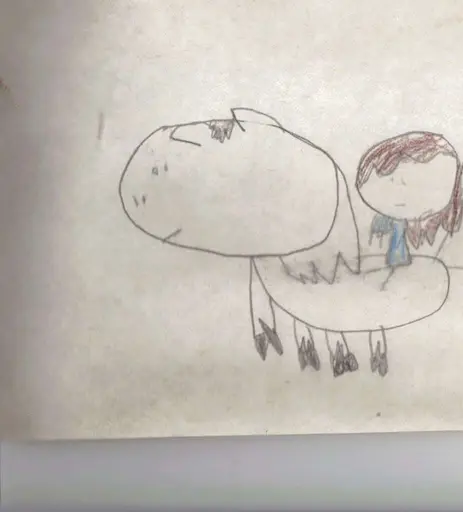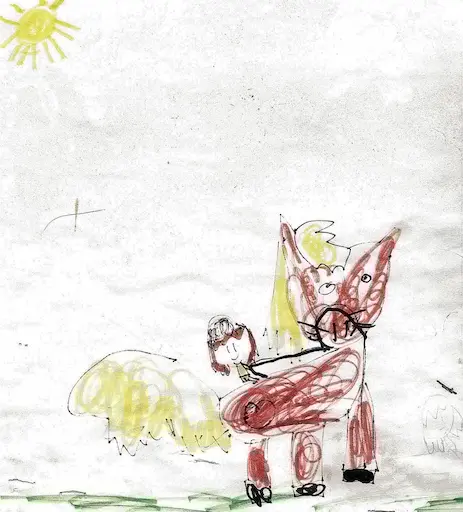If you’re a parent of a child with autism or if you’re autistic yourself you’ll know it can be very lonely and depressing sometimes with every day proving to be a challenge. It can sometimes be difficult to know where to turn for help, that said recent research has proven that horse therapy can help sufferers deal with autism.
What is horse therapy?
Sometimes called equine-assisted therapy, horse therapy in its basic form is being around horses, whether it’s riding, grooming, or just stroking them. As I say though that’s the basic explanation. To explain it in more detail though, horse therapy, referred to by some as hippotherapy (from ‘hippos’, the Greek for horse), involves a trained therapist (and an instructor if the therapist isn’t an instructor) working in a controlled environment with a patient and a therapy horse. The aim is to help the patient understand and discover themselves and learn how to deal with their daily life. It can be, and is regularly, used for a range of developmental and mental health conditions such as autism, depression, and PTSD.
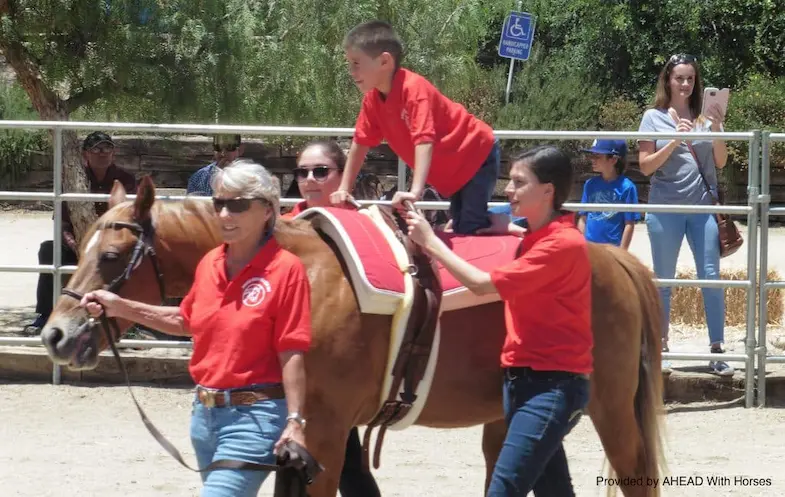
What are the benefits of horse therapy?
Along with autism and other developmental disorders and neurological conditions, Equine-Assisted Therapy has been proven to help patients on so many levels. As you’ll see from the case studies below it can not only help patients to understand themselves and their condition but it can also help them to find their confidence and reduce their anxiety.
A large number of studies have been carried out into the benefits of Equine-Assisted Therapy and the results are extremely compelling. As well as helping children with their confidence and communication, the APTA (American Physical Therapy Association) also, understand that therapy can help with:
- Improvements in trunk Control, balance, muscle tone and strength
- Improved coordination and faster reflexes
- Increased muscular control
- Improved postural control
- Decreased spasticity and increase in flexibility
- Increased range of motion of joints
- Stretching of tight or spastic muscles
- Increased endurance and low-level cardiovascular conditioning
- Stimulates sensory integration and concentration
- Improved spatial awareness and perceptual skills
- Improved gross and fine motor skills and coordination
- Improved self-confidence and pride
- Increased self-esteem and self-image
- Development of patience
- Emotional control, self-discipline and self-awareness
- Cognitive skills
- Speech and language skills
- Expansion of locus of control
- Improved risk-taking abilities
- Sense of normalcy
- Socialization and improved interpersonal skills
- Increased perception of the quality of life and life satisfaction
- Stress reduction
The above was taken from an extract of an article written by Michelle Newman, Executive Director of AHEAD With Horses Inc., you can read the full article here.
Is horse riding good for autism?
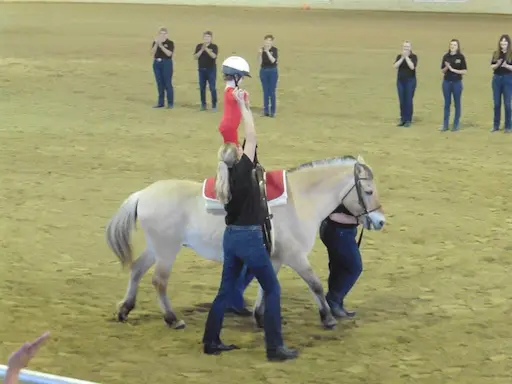
Horse riding can be good for so many things from losing weight to improving your mood but the effects it can have on autism are often overlooked. Contact with pretty much any animal has been scientifically proven to help with autism but while petting animals can be great it’s the ability to ride horses that really increases the benefits. To start with, a horse’s natural gait is very rhythmic so can help to calm anxiety and reduce stress. Riding can also help with balance and flexibility.
One aspect that isn’t often thought about is the connection that the horse and rider have. Children with autism can often feel disconnected from the world around them but horses don’t judge and won’t expect anything from you so they’re able to connect with a child (or anybody for that matter) on a level that both parties are comfortable with. They’re patient and won’t pressure the child in any way.
All communication between horse and rider is non-verbal which helps the child to develop their confidence without feeling as if they have to do anything. This will, in time, help them to improve their verbal communication skills with people.
Can horses sense autism?
Of course, a horse won’t see a child with autism and think ’that child must have autism’ but they will understand that they need to be patient and forgiving of the child. We all know that horses are herd animals and that they look out for each other but what you might not realize though is that they’ll behave in the same way with anybody that they feel needs ‘looking after’.
This means that while a horse won’t be able to sense your child has autism they will understand that the child may be vulnerable and needs to be protected. Not all horses have the temperament to be therapy horses but those that do will be calm and patient and allow the child to interact with them in ways that a lot of other horses won’t. For example, we’re always told that we should be careful of a horse’s behind but with therapy horses, this isn’t the case.
Equine-Assisted Therapy case studies
In the process of writing this article, I spoke to a large number of therapeutic riding instructors to get their perspectives on the benefits of horse riding as a form of therapy. One thing that struck me was just how positive the therapy was from both the child and the parent’s point of view and I thought the best way of demonstrating this was to share a handful of the stories I’d been told.
Catherine Hand
Owner and founder of Dream Rider Equestrian Therapy, Catherine Hand is a certified advanced PATH (Professional Association of Therapeutic Horsemanship) International Therapeutic Riding Instructor for physical and cognitive impairments. Having dedicated the past twenty years of her life to helping people with therapeutic riding she uses both music and art in her lessons to help aid the therapy.
Having spoken at great length with Catherine she was more than happy to share some of her most rewarding cases with me. I’ve changed their names to protect their identity but two of those cases are detailed below.
Case one – Joe, a 7 year old boy
A number of years ago Catherine was asked to help with Joe, a seven year old boy with severe Aspergers. Sadly Joe was becoming more and more difficult to handle at home and when he was first taken to Catherine it was done without much hope of the therapy working and, if first impressions were anything to go by, this was going to be proven right.
Immediately Catherine put Joe in a ‘treasure hunt’ ride with twins of a similar age. The idea of the ride was that they would make their way to different areas each with a clue that would send them to the next clue. The ride would then culminate at a mailbox that would have lollies as a reward. Catherine thought that putting him with the twins, who both had autism, would help to show Joe that he would have a better time if he wasn’t aggressive towards other people. That first lesson didn’t go well and within five minutes he was lashing out at the volunteers and verbally abusing them. For the safety of the volunteers, Catherine had to ask for the boy to be taken out of the ride but had asked his father to allow him to watch the rest of the ride.
After the ride had finished and the twins were enjoying their lollies Catherine asked Joe if there was anything that he liked about what he’d seen, as you’d expect for a seven year old the answer was ‘yes, I’d like to have a lolly too’. After establishing that he only wanted to do something for as long as he was interested in doing it, they agreed that he could have a lolly but that in order to get it he would have to come back the next week. Knowing that he wouldn’t want to ride for the full hour Catherine assured Joe that he would only have to ride for five minutes.
As promised, the following week after five minutes Catherine said to him that his time was up and he could leave, giving him the lolly before he did. The boy returned every week and over the next few weeks went from only riding for five minutes to completing an hour-long ride with enthusiasm and interest. Participation became his choice. He carried on riding in the program and oppositional defiance was no longer an issue because engagement became a pleasure he chose for himself.
Case two – Amie, an 11 year old girl
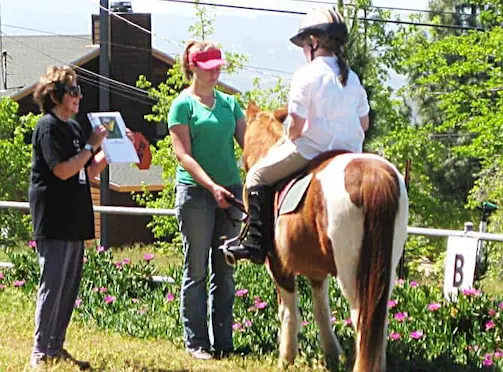
Some years later Catherine was helping an eleven year old girl called Amie who was very withdrawn. Registering high on the autism spectrum Amie would become very upset with new experiences and situations so it made Catherine’s work difficult from the start. Knowing that Amie loved Beethoven and had an immense interest in insects and bugs, Catherine printed pictures of different insects for every letter of the dressage arena markers and also played Beethoven during their lessons. The music made her want to move and to ask the horse to move her from letter to letter so she could talk about her favorite subject. She was free to talk about the insects as much as she wanted to but only when she stopped the horse at that marker. This meant that Amie not only had to learn how to ask the horse to walk, she also had to learn how to ask him to stop.
After her first lesson, Catherine asked Amie to draw a picture of herself, the resulting drawing showed her with a big head but a tiny body. As their time together progressed Amie began to understand that she was in control of the horse and that he would respond to her commands. After her second lesson, Catherine again asked Amie to draw a picture, this time though she drew herself on the horse. Both with big heads but with their heads turned towards each other demonstrating the connection they had. She showed in the drawing that she felt that the horse obeying her wishes showed that the horse understood her unique way of seeing the world. She was right. Their connection really was mental as well as physical.
As Amie continued with Catherine she began to understand herself more as well as how to interact with others and the ‘outside’ world in general. She no longer felt anxious in new situations and quickly learned how to interact with others. Catherine learned from this experience how useful it is when working with an obsessive-compulsive individual how important it is to meet that person through her intense interests. By respecting this girl’s fascination with her particular obsessions, a foundation for communication was established.
Michelle Newman
Executive Director at AHEAD (Accelerated Habilitation Education And Development) With Horses Inc., Michelle began volunteering from a very young age and started working for AHEAD With Horses Inc. back in 2005. At that time she has helped a wide range of children and has kindly shared a few of the letters she had received from delighted parents.
The first letter is from the mother of two autistic girls who has seen a drastic improvement in them both since they first started horse therapy. The second letter) is from the mother of a 5 1/2 year old boy whose physiotherapist recommended the boy started the program to help with his core strength. The boy improved so much that they were able to stop seeing the physiotherapist.
Autism Societies
There are a large number of autism societies around the globe who are always happy to help if you have any questions or are worried about anything. Autism Speaks have a full list here but below is a handful of them:
- Autism Society USA
- Autism Canada
- National Autistic Society UK
- Autism Europe
- Autism Awareness Australia
- Autism New Zealand
- Autism South Africa
- Autism India
I hope you found this article helpful. If you did I’d be grateful if you could share it please as it would really help me.
Recommended products
Over the years I have tried hundreds of different horsey products, from various blankets and halters to different treats. Some I’ve loved, others I’ve hated but I thought I’d share with you my top all-time favorite products, the ones I never leave the yard without. I’ve included links to the products (which are in no particular order) that I really think are great.
- Horse Knots by Reference Ready – If you’re like me and enjoy pocket reference guides then you’ll love this knot tying guide. These handy cards can easily fit in your pocket or attach to the saddle for quick reference. They’re waterproof, durable and are color coded to make them easy to follow.
- Mane ’n Tail Detangler – Even if you never show your horse you’ll need to detangle his tail from time to time (and possibly his mane too) which is always a challenging chore! I’ve found that if I run a little bit of detangler through my horse’s tails every few days it stops them from getting matted up and makes combing them easy, even if they’re coated in mud. I don’t know if I should admit to this or not but it also works wonders on my hair.
- TAKEKIT Pro clippers – Over the years I’ve tried a lot of different clippers and while some were obviously better than others I found these to be by far the best. They are heavier than a lot of other clippers but for me, that’s a good thing, it makes them feel more sturdy and hardwearing. On top of that they have a range of speeds so are just as good for clipping your horse’s back as they are his face. I also like the fact that they come in a handy carry case but that’s not for everybody. The company that makes them is super good and incredibly helpful too, a real bonus these days. The only thing I wasn’t keen on was the fact that it doesn’t come with any oil, but that’s not a major problem as it’s not difficult to buy lubricant.
- Shire’s ball feeder – There are so many boredom buster toys out there but I like to use these every day, regardless of whether or not my horses are bored. I find that it helps to encourage my horses to problem solve by rewarding them with treats (or pieces of fruit) but it also mimics their natural grazing behavior which helps to keep them calm and de-stressed.
- Horse safe mirror – This is a strange one that many people are surprised about but I like to put horse safe mirrors in the trailers as well as in the quarantine stalls. It helps to prevent the feeling of isolation by giving the impression of other horses being around. Being herd animals horses can get extremely stressed when they feel that they’re on their own but with these stick-on mirrors, they believe that at least one other horse is with them.
- Rectal thermometer – I know this isn’t glamourous at all but it’s vital for your horse’s well-being to be able to check their temperature and a rectal thermometer is the easiest way of doing this which is why I’ve added it to the list.
Shopping lists
I’ve also put together a few shopping lists of essential items that I’ve found helpful over the years. I’ve broken the lists down into different categories rather than put everything in one massive list 😉

